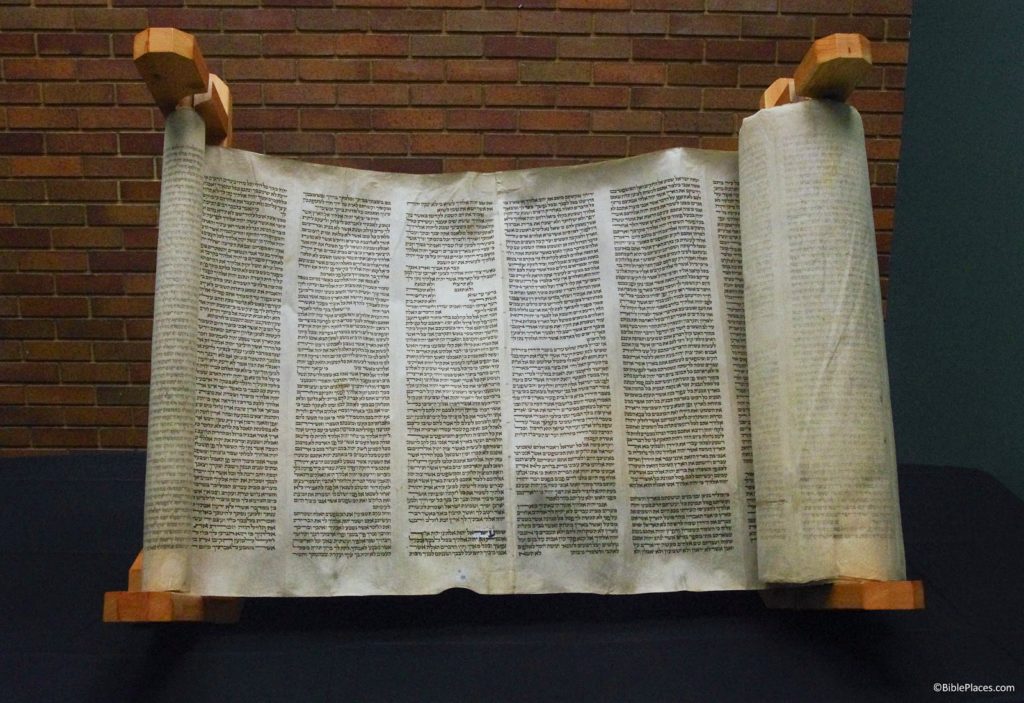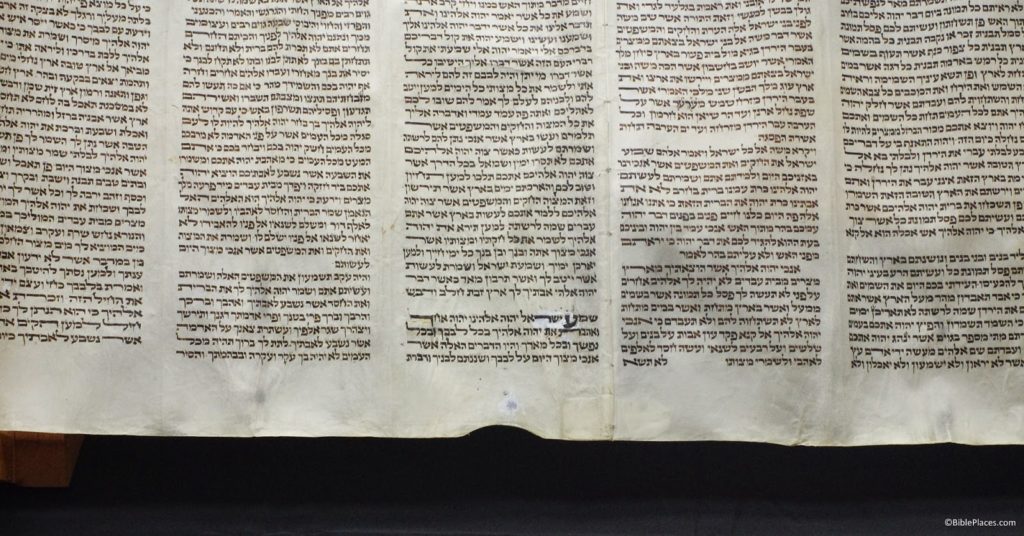(Post by A.D. Riddle)
We are a little late getting to this, but it might be of interest to some. Back on September 18, 2014, Trinity Evangelical Divinity School held a dedication service for a Torah scroll that was gifted to the school. The scroll originated in Germany and dates to the late 1400s or early 1500s. The sign presently displayed with the Torah states:
The Trinity Ashkenazi Torah Scroll
An extraordinary, generous gift from the Ken and Barbara Larson Family
This spectacular Ashkenazi Torah from Germany dates between the late 15th and early 16th century A.D. (roughly around the time of Martin Luther). The scroll’s pagination and orthography clearly indicate this date, while its style, the preparation of its skins and its ink all clearly indicate a German provenance. Such a date makes it among the earliest 2% of surviving German Torah scrolls. It has been used continuously for nearly 500 years and survived the Nazi Holocaust, the most horrific chapter in Jewish history.
It is approximately 100 feet long and is written in columns of 59 lines throughout. It contains numerous fascinating orthographic features encountered in medieval scrolls that were repressed by the rabbis around 1600 A.D. The Torah is filled with elegant magna letters, small or raised letters, dotted letters and inverted nuns—all related to early Jewish scribal traditions.
The official announcement of the dedication contains a few more details about the scroll, and a report written afterwards includes even more description as well as photos of the event.
- The scroll is valued at over $400,000.
- The scroll has indented punch marks (tropes) above words and letters to aid in pronunciation and cantillation. This feature is more typical of Yemeni Jewish scrolls.
- The scroll was constructed from over 60 calf skins.
- It contains corrections, crossed-out words, and later repairs to the parchment.
- The scroll was copied and used in Germany, survived the Nazi Holocaust, and was later transported to Israel.
- There are plans to create a digital replica of the scroll.
Here are two photos of the Trinity Ashkenazi Torah Scroll.
The scroll is open to Deuteronomy 5. The lines that are spaced differently near the top of the center column are the 10 Commandments.
Close-up of Deuteronomy 6:4 in the Trinity Ashkenazi Torah Scroll. Notice the extra large letters which mark the first and last words of the verse. The white patch is newer parchment used to repair the original.
Bethel University received a similar gift earlier in the year (here, here, and here).
UPDATE (December 20, 2015): As of early December 2015, Ken and Barbara Larson have donated Torah scrolls to 16 schools. The list below is as complete as I could make it, but it is missing two schools.
- Bethel University (March 31, 2014)
- Multnomah University (September 4, 2014)
- Trinity Evangelical Divinity School (September 18, 2014)
- The Master’s Seminary (September 30, 2014)
- Veritas Evangelical Seminary (November 8, 2014)
- Wheaton College (November 18, 2014)
- Southwestern Baptist Theological Seminary (December 3, 2014)
- Dallas Theological Seminary (December 5, 2014)
- Trinity Western University (February 2, 2015)
- Western Seminary, Portland (February 6, 2015)
- Denver Seminary (April 20, 2015)
- Liberty University School of Divinity (September 28, 2015)
- Baptist Missionary Association Theological Seminary – Arkansas (October 30, 2015; the announcement said BMATS was the 15th school to receive a Torah scroll)
- Moody Bible Institute (December 2, 2015; the announcement said 15 other schools had received Torah scrolls)




